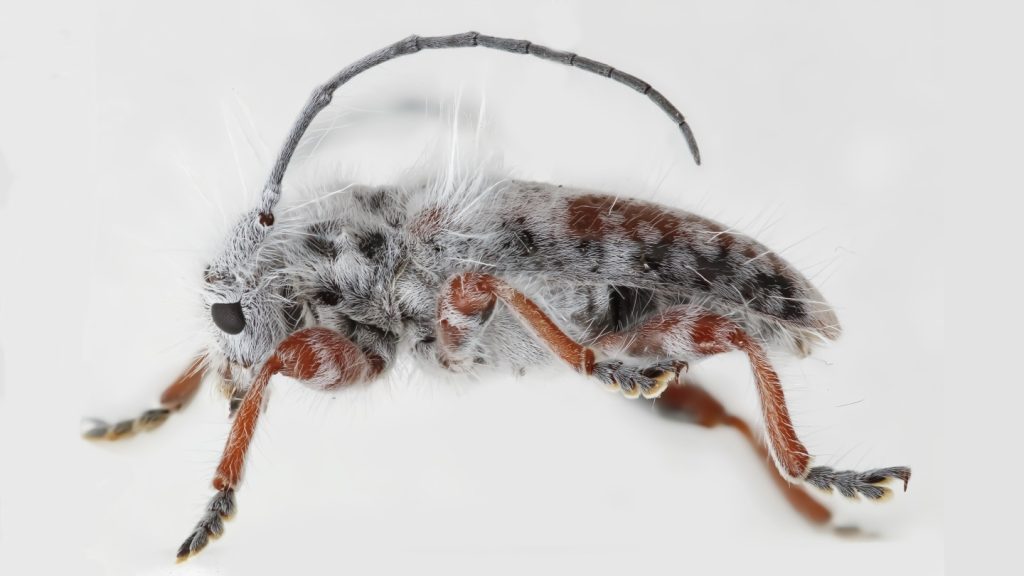Excastra albopilosa is a newly discovered species of longhorn beetle found in Australia, sporting a distinctive fluffy white coat and unique physical characteristics. Researchers suggest that the beetle may belong to its own genetic family or genus due to its separated eye lobes, short antennal segments, and variations in leg shapes. The batel, measuring almost a centimeter in length, was discovered in a popular area for longhorn beetle enthusiasts. Entomologist James Tweed stumbled upon the beetle while staying at an ecolodge near Lamington National Park and uploaded a photo to iNaturalist, where it stumped both app users and senior beetle experts.
After failing to identify the beetle through the iNaturalist app and numerous databases, Tweed and his colleagues determined that the beetle belonged to a distinct genus and species due to its unique physical appearance. The beetle was proposed to be named Excastra albopilosa, derived from Latin words meaning “from a camp” and “white and hairy,” respectively. The purpose of the fluffy white hairs on the beetle remains uncertain, with possibilities ranging from predator deterrence to body temperature regulation.
Despite discovering thousands of new species each year, entomologists are still far from naming all insect species globally. Of the estimated 5 million insect species, only a million have been named thus far. Discovering new species and adding them to the scientific literature is crucial for ensuring their recognition and conservation. The process of identifying and classifying new species like Excastra albopilosa provides a sense of achievement and contributes to the safeguarding of biodiversity.
The discovery of Excastra albopilosa highlights the importance of continued research and exploration in the field of entomology. Understanding the biodiversity of insects is essential for ecological conservation and management practices. By identifying new species and documenting their characteristics, researchers contribute to the scientific knowledge base and aid in the protection of diverse ecosystems. The unique features of Excastra albopilosa showcase the beauty and complexity of the natural world, emphasizing the need for ongoing efforts to study and preserve insect species for future generations to appreciate.


